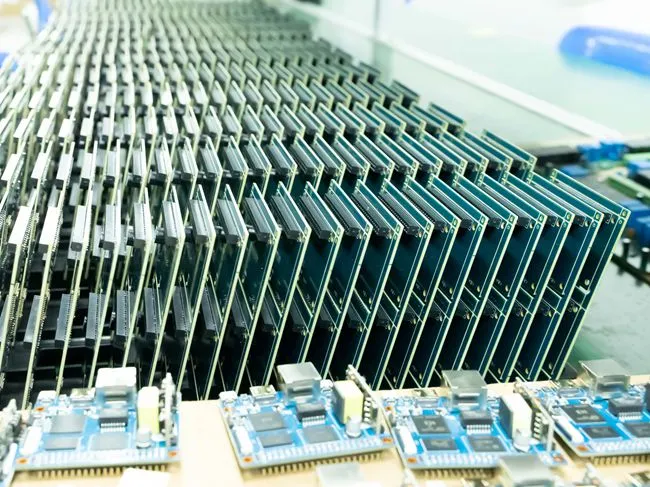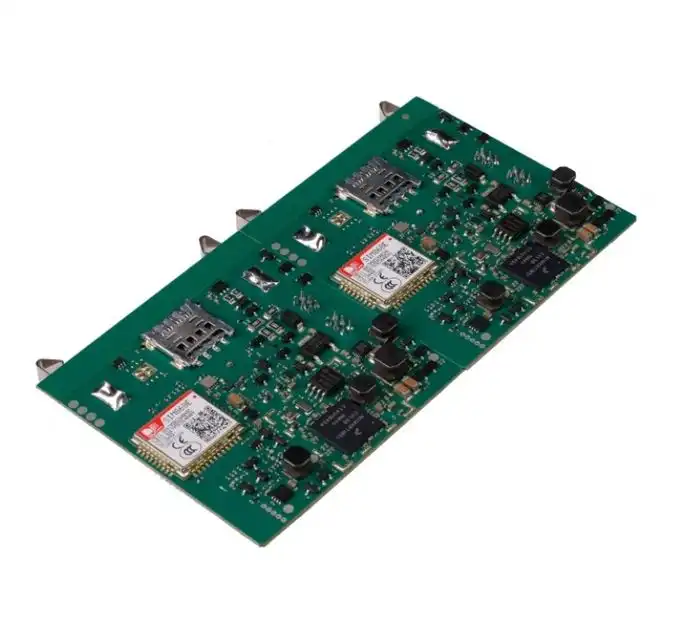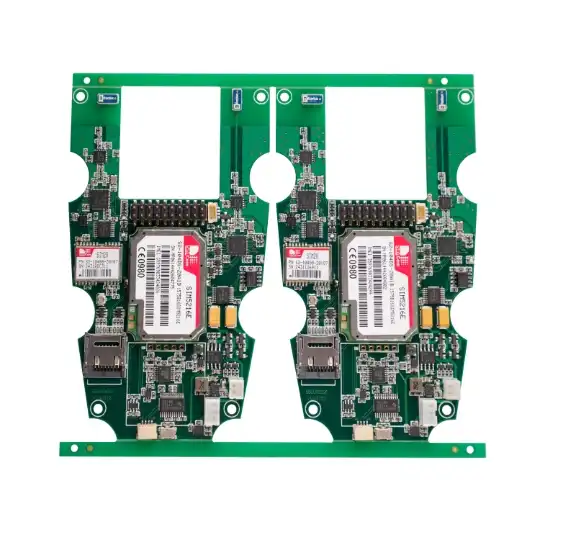Reliable PCBA Solutions for Underwater Drones
Underwater drones have revolutionized marine exploration, research, and industrial applications. These sophisticated machines require robust and reliable Printed Circuit Board Assemblies (PCBAs) to function effectively in harsh underwater environments. Robotics PCB assembly for underwater drones demands specialized solutions that can withstand extreme pressure, corrosive saltwater, and temperature fluctuations. This article delves into the world of PCBA solutions tailored for underwater drones, exploring the unique challenges, innovative technologies, and best practices in this fascinating field of marine robotics.

Challenges in Underwater Drone PCBA Design
Environmental Considerations
Designing PCBAs for underwater drones presents a unique set of challenges due to the harsh marine environment. The extreme pressure at various depths can cause components to fail or connections to break. Saltwater's corrosive nature poses a significant threat to electronic components, potentially leading to short circuits and degradation. Temperature fluctuations in different water layers can affect component performance and lifespan.
To address these challenges, robotics PCB assembly for underwater applications must incorporate specialized materials and design techniques. For instance, using conformal coatings can protect the PCBA from moisture and corrosion. Selecting components rated for high-pressure environments and implementing robust sealing techniques are crucial for maintaining the integrity of the assembly underwater.
Power Management and Efficiency
Underwater drones often operate in remote locations, making power management a critical aspect of PCBA design. Efficient power distribution and consumption are essential for maximizing the drone's operational time and range. This requires careful component selection and circuit design to minimize power loss and optimize energy usage.
Advanced robotics PCB assembly techniques, such as using low-power components and implementing smart power management systems, can significantly enhance the efficiency of underwater drones. Additionally, integrating energy harvesting technologies, like solar panels or kinetic energy converters, can extend the operational capabilities of these marine robots.
Signal Integrity in Aquatic Environments
Maintaining signal integrity in underwater environments is challenging due to electromagnetic interference and signal attenuation in water. PCBAs for underwater drones must be designed to ensure clear communication between various components and sensors, as well as with external control systems.
Techniques such as proper shielding, using differential signaling, and implementing robust error correction protocols are essential in robotics PCB assembly for underwater applications. These measures help maintain reliable data transmission and control, even in challenging aquatic conditions.
Innovative Technologies in Underwater Drone PCBAs
Advanced Materials and Coatings
The development of new materials and coatings has significantly enhanced the reliability of PCBAs in underwater drones. Hydrophobic and oleophobic coatings can repel water and oils, providing an additional layer of protection against moisture ingress. Some robotics PCB assembly processes now incorporate nanocoatings that offer superior protection against corrosion and electrical shorts.
Moreover, the use of flexible and rigid-flex PCBs has become increasingly common in underwater drone design. These PCBs can conform to the drone's shape, allowing for more compact and hydrodynamic designs while maintaining the necessary electronic functionality.
3D Printing and Additive Manufacturing
3D printing technology has opened new possibilities in robotics PCB assembly for underwater applications. It allows for the creation of custom enclosures and housings that perfectly fit the PCBA, enhancing protection against water ingress. Additionally, 3D-printed structures can incorporate channels for cooling or cable routing, optimizing the overall design of the underwater drone.
Some advanced manufacturing techniques even allow for the direct 3D printing of conductive traces and components, enabling the creation of highly customized and integrated PCBAs for specialized underwater applications.
Sensors and IoT Integration
The integration of advanced sensors and Internet of Things (IoT) technologies has greatly expanded the capabilities of underwater drones. Modern robotics PCB assembly processes can incorporate a wide array of sensors, including pressure sensors, temperature probes, and chemical detectors, directly onto the PCBA.
IoT connectivity allows underwater drones to transmit data in real-time, enabling remote monitoring and control. This integration requires careful consideration in PCBA design to ensure reliable communication while maintaining the drone's waterproof integrity.
Best Practices in Underwater Drone PCBA Manufacturing
Quality Control and Testing
Rigorous quality control and testing are paramount in robotics PCB assembly for underwater drones. Each PCBA must undergo extensive testing to ensure its reliability in aquatic environments. This includes environmental stress screening, which subjects the assemblies to simulated underwater conditions to identify potential weaknesses.
X-ray inspection and automated optical inspection (AOI) are commonly used to detect manufacturing defects that could compromise the PCBA's performance underwater. Functional testing under various pressure and temperature conditions is also crucial to validate the assembly's reliability in real-world scenarios.
Modular Design Approach
A modular approach to PCBA design can significantly enhance the maintainability and upgradability of underwater drones. By dividing the electronic system into discrete, replaceable modules, manufacturers can simplify repairs and updates, even in field conditions.
This approach in robotics PCB assembly also allows for easier customization of underwater drones for specific missions or environments. Modules can be swapped out or upgraded without redesigning the entire system, providing greater flexibility and cost-effectiveness.
Thermal Management Strategies
Effective thermal management is crucial for the longevity and reliability of PCBAs in underwater drones. Water can act as both a heat sink and an insulator, depending on the design, which presents unique challenges in managing component temperatures.
Advanced robotics PCB assembly techniques for underwater applications often incorporate thermal simulation and analysis to optimize heat dissipation. This may involve strategic component placement, the use of thermal vias, or even liquid cooling systems in high-power applications.
Conclusion
The field of robotics PCB assembly for underwater drones continues to evolve, driven by the demands of marine exploration, research, and industry. By addressing the unique challenges of the underwater environment and leveraging innovative technologies, manufacturers are producing increasingly reliable and capable PCBAs for underwater drones. As this technology advances, we can expect to see even more sophisticated and resilient underwater robotic systems, opening up new possibilities for exploring and understanding our planet's vast oceans.
Custom marine-grade solutions for underwater tech firms | Ring PCB
Ring PCB Technology Co., Limited offers cutting-edge PCB and PCBA one-stop solution tailored for marine applications. With 17 years of expertise, we deliver innovative, reliable, and cost-effective products for underwater technologies. Our advanced engineering capabilities include high-density stack-ups up to 48 layers, precision manufacturing adhering to IPC-6012 Class 3 standards, and comprehensive testing procedures. Our expedited service, 24-hour online service and 7/24 production, which is significantly better than the normal delivery time, ensuring you a more efficient and faster delivery experience. For unparalleled quality in marine-grade PCBAs, contact us at [email protected].
References
1. Johnson, M. L., & Smith, R. K. (2022). Advancements in Underwater Drone Technology: A Comprehensive Review. Journal of Marine Robotics, 15(3), 287-305.
2. Chen, Y., & Wang, L. (2021). Challenges and Solutions in PCBA Design for Harsh Marine Environments. IEEE Transactions on Components, Packaging and Manufacturing Technology, 11(4), 612-625.
3. Thompson, A. B., & Davis, E. C. (2023). Innovative Materials for Underwater Electronics: From Coatings to Flexible PCBs. Advanced Materials for Extreme Environments, 8(2), 145-160.
4. Roberts, S. J., & Brown, T. L. (2022). Quality Assurance in Underwater Robotics: Best Practices for PCBA Manufacturing and Testing. International Journal of Quality Engineering and Technology, 9(1), 78-93.
5. Patel, N., & Yamamoto, K. (2023). Thermal Management Strategies for Underwater Drone Electronics: A Comparative Analysis. Journal of Thermal Engineering in Marine Systems, 7(3), 201-218.

Welcome to Ring PCB! Share your inquiry, and receive a tailored quotation!

Ring PCB, your trusted partner for PCB & PCBA Full Turnkey Solutions



